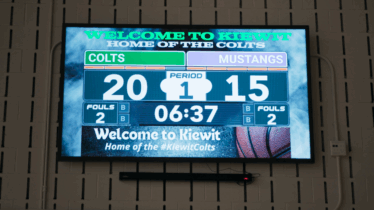If your child’s school district is making the switch to Chromebooks, it’s likely that teachers and students will also be making use of Google Classroom, a digital learning platform designed to make lessons and homework accessible and easily shareable between teachers and students.
Google Classroom has become a common virtual workspace for K-12 schools worldwide, with more than 150 million students using the platform. Teachers can use it to create, manage and grade assignments, give real-time feedback to students and host video meetings.
Chromebook videos by kids, for kids (and parents!)
While Google’s cloud-based learning platform is intuitive and easy to learn, younger students may need some help getting up to speed. To support them, Samsung has created “Chromebook hacks for the new classroom” — a series of kid-hosted how-to videos that cover everything your kids need to know, from the absolute basics, right through to pro tips.
There are videos tailored to young students on how to get the most out of Google Classroom, Google Docs and Google Slides — plus other related topics like Chromebook beginner’s tips and how to look after your Chromebook.
17 innovative lesson ideas for remote learning
Get your free pack of multidisciplinary lesson plans to teach modern students with modern tools. Download Now
But kids aren’t the only ones who might need help navigating a new app. For parents who are also new to Google Classroom, these tips can help you get acquainted:
Google Classroom tips for parents
Accessing Google Classroom: To access Google Classroom, just open classroom.google.com in your browser (there is also an Android app for on-the-go use). When you open Google Classroom, check the user icon to be sure you’re signed in under your child’s school account (parents cannot access from their own Google account). Once you’re signed in, you’ll see the main page listing all the classes your child is enrolled in.
Finding assignment due dates: To check which assignments are due and when, click the menu on the left and select “To-do.” You’ll see a list of all upcoming assignments and when each one is due.
Checking your child’s schedule: To view your child’s class schedule, open the menu again and choose Calendar. This gives you a weekly view of all your child’s classes and responsibilities.
Checking your child’s homework: To view homework and grades for a particular class, click on a particular class from the homepage. This takes you to the Stream, which teachers use to post announcements and updates. On the left side of this page, you’ll see a box that tells you which assignments are due next. Click “View All” to see a list of assignments, or click “Done” to see only graded assignments. You can then click into the assignment title to view it.
Receiving notifications: To set up email notifications for your child, go to the menu again and click Settings. You should see an option to turn on e-mail notifications. When on, you can specify which types of notifications you want yourself or your child to receive.
Receiving email summaries for parents and guardians: Some teachers also provide email summaries for students’ parents or guardians. If your child’s teacher has enabled this function, you’ll receive an email invitation and be asked to choose between daily or weekly summaries. These emails provide a breakdown of missing and upcoming assignments, class activities and more.
For more Chromebook tips and tricks for students, teachers and everyone else, be sure to check out Samsung’s other Chromebook how-to videos.
As you consider bringing more mobile technology to your district, discover the breadth of digital learning tools from Samsung. And if there are budget concerns — there usually are — learn how to create, present and secure grants for remote learning technology in this free guide.







